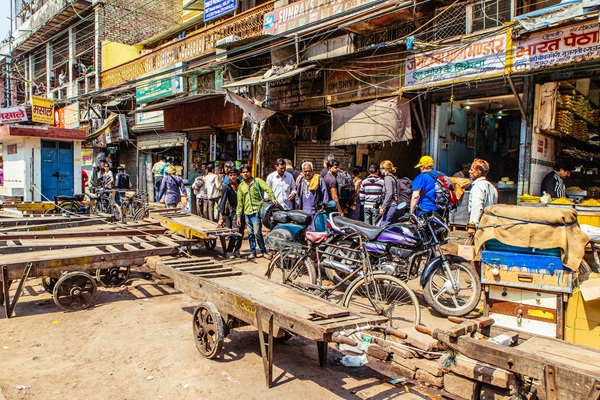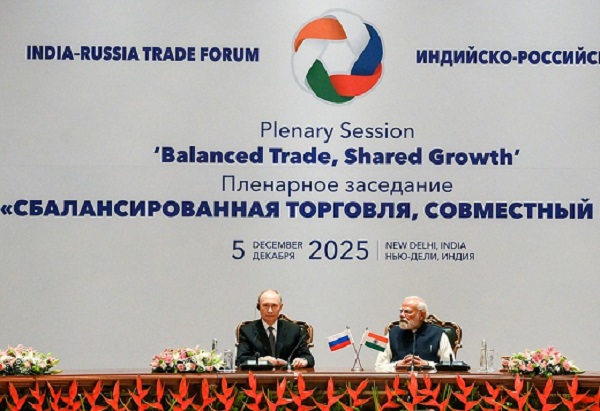.png)

Groupthink is the House View of BasisPoint’s in-house columnists.
June 30, 2025 at 4:57 AM IST
The global economy may be grappling with prolonged trade uncertainties and geopolitical tensions, but official assessments by the Ministry of Finance and the Reserve Bank of India seem to have settled into a comforting habit: declaring India’s economy to be in a Goldilocks zone.
The Monthly Economic Review by the Department of Economic Affairs and the State of the Economy report by the RBI staff boast of resilient growth, falling inflation and strong fundamentals. Yet the celebratory tone sits awkwardly with subtler and less convenient risks these reports quietly admit to before swiftly moving on.
Beneath the confident messaging, both reports reveal signs of moderation that should worry any serious policymaker. Urban demand is showing cracks. Sales of entry-level passenger vehicles are falling, pointing to squeezed lower-income consumers. They reflect real growth in urban consumption demand, not air passenger traffic or hotel occupancy rates.
Momentum in the construction sector, a key driver of investment, has slowed, with growth in steel and cement consumption moderating from the previous quarter’s pace. Meanwhile, rural India, which is supposedly buoyed by a good harvest, showed renewed dependence on MGNREGS work in May. This suggests that under-employment remains stubbornly entrenched amid talks of booming rural consumption. Moreover, indicators such as tractor sales, often cited as evidence of rural demand, can be misleading due to base effects.
These are not minor statistical footnotes. They are structural signs of a patchy recovery. A truly objective analysis would elevate these signals to the core of the outlook. Instead, both documents gloss over them as passing mentions on an otherwise sunny day.
The Ministry of Finance’s narrative reads like an investment brochure: robust rural demand, easing inflation, surging high-frequency indicators, and record forex reserves. The RBI’s report is slightly more nuanced, acknowledging “mixed signals” such as urban demand moderation and rising MGNREGS demand, but still frames them as minor deviations in a fundamentally resilient story.
The result is a public message that effectively says: “All is well.” It is marketing, not risk management. And that is not harmless. When policymakers and markets absorb a one-sided narrative, they may underprice real vulnerabilities.
A slowdown in construction inputs is not trivial. It reflects capex momentum cooling just as the government wants the private sector to lead the investment cycle. RBI rate cuts alone cannot conjure private capex if business confidence is weak or big corporates choose consolidation over risk-taking. Yet neither report squarely addresses the elephant in the room: India’s tycoons are not lining up with new factories and projects at scale, and the so-called capex relay race risks dropping the baton.
Similarly, urban consumption is the heartbeat of India’s growth story. When entry-level car buyers hold back, it points to income stress that rate cuts and headline CPI figures cannot hide. The reliance on MGNREGS work also shows rural families are not yet feeling secure enough to forgo fallback employment. These issues demand more than polite footnotes.
One might argue that government economic surveys will always lean optimistic—it is, after all, their job to talk up the economy. But the RBI is supposed to be different. It is India’s risk manager-in-chief. Its public analysis should help markets and businesses price risk soberly, not indulge in self-congratulation. By smoothing away the rough edges in service of a Goldilocks narrative, the RBI risks failing in its core responsibility: telling the economy the truth about itself.
A more neutral tone would acknowledge that falling inflation creates space for rate cuts but warn that demand remains uneven and investment momentum is fragile. It would see rural MGNREGS pick-up not as an outlier, but as an early warning signal.
It would caution that financial market stability depends on growth being genuinely broad-based rather than selectively strong, and recognise that policy credibility is built not on perpetual optimism but on clear-eyed honesty about risks and trade-offs.
Instead, what we get is a reassuring lullaby when what India needs is a clear-eyed conversation. By glossing over domestic weaknesses, these official reports undermine the credibility of the economic resilience they purport to highlight.




